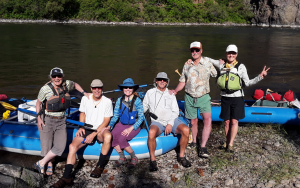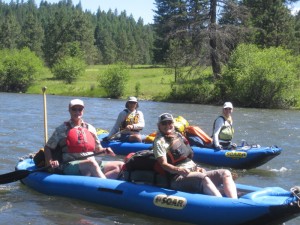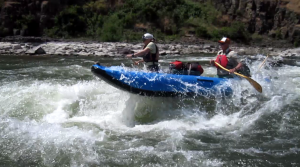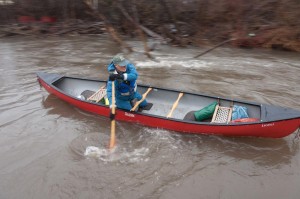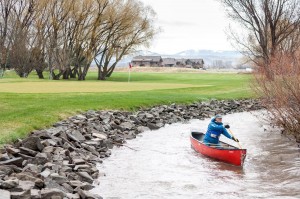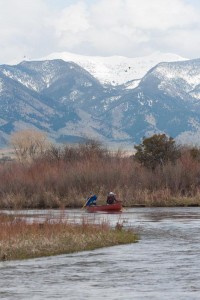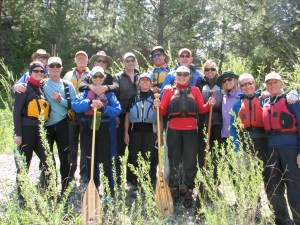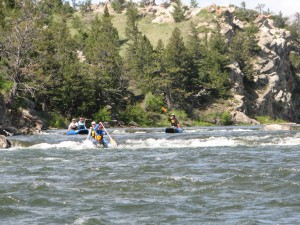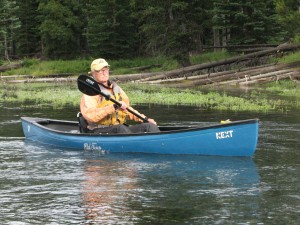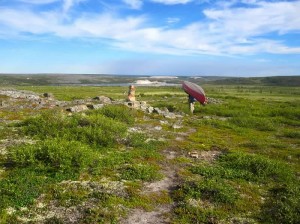CHAPTER 2 – JUNE: REUNION
There are families who schedule annual get-togethers where everyone routinely shows up and has a rip-roaring time brimming with good food, plenty of libation, spirited games and catching up. Mine is not such a family. We go decades between what you’d call a reunion with anything like a quorum. We’re lucky if we can collect a few cousins together who happen to be in the same part of the country. I remember maybe three times in the past 50 years when we’ve gathered a representative portion of my extended family in one spot for a weekend. It’s not that family feuds keep us at arms length, or problematic relatives. Nothing more than logistics, distance, competing agendas – life.
So, when a June reunion was put together in Pt. Townsend, Washington and most everyone signed up, some coming from across the continent, it felt mandatory. There had been an attempt made the previous year, which fell apart under the weight of conflicting details. Next year, we all said. Now it’s next year and we’re going.
It turns out that there are a handful of inspiring rivers between Bozeman, Montana and Pt. Townsend, Washington. River trips on the way somewhere are a common target in my life. Maybe we should pick one off . . .
I suggest the Grande Ronde River, in northeastern Oregon, which flows out of the Blue Mountains not far from the town of La Grande, and on into the Snake River about 200 miles later near Heller Bar. I’d floated it before with the ‘Boy’s Trips’, but never in June, and never with Marypat. She had wanted to experience the river ever since she’d heard of it, and ever since I’d done it. Marypat’s propensity to fall prey to FOMO (Fear Of Missing Out), that longing to do things she hears about others doing without her, is legendary. Besides, who can resist a river with such an evocative, big-hearted name? Grande Ronde – sounds vast, sounds exotic, sounds French . . . never mind that it translates to Big Circle. By the time I got the translation, I’d already been hooked.
These journeys, and the details surrounding them, have a way of evolving, taking on a life. We mentioned the trip to our friends, Jeff and Molly, when we did some mid-winter paddling in Arizona together. They had tried to do the Grande Ronde more than thirty years earlier, but had gotten to the put-in during a raging flood and decided to back off. For them it was unfinished business, and after consulting their calendar, they were in. As the date approached, and I was considering travel details, I thought of my friend, Dan, who lives in La Grande, quite conveniently near to the put-in. Maybe we could stay with him, leave a car in his driveway, camp in his yard . . . come to think of it, maybe he’d want to join us.
Dan was fine with us using his place as a landing spot, and he wanted to check with his partner, Susan, about joining us. He’d taken her on an earlier raft trip on another river, a trip that featured hypothermic weather and less-than-ideal group dynamics, which had put her off river trips in general. Perhaps this would be a chance to reset her view. They talked. She agreed, with covenants. Dan was in, with an escape hatch if the weather looked like it would reproduce the conditions of his earlier misadventure. Fine. We could all be independent and flexible. In any case, we had a launch pad.
In mid-June we pull into Dan’s driveway after a long day on the highway. La Grande is a quiet, smallish town with a state university campus, the obligatory slate of brew pubs, coffee joints, yoga studios that make it attractive to people like us, but still sleepy enough to stroll down the middle of residential streets of an evening. Close to some rugged mountain ranges, surrounded by big swatches of ponderosa pine forested public land, seamed with interesting rivers, and blessed with a real estate market that hasn’t gone nuts: Slightly off the radar, but with amenities.
Marypat and I are looking at places like La Grande. Bozeman has gone crazy in the nearly 40 years we’ve lived there. While we were lucky enough to buy a home when people like us could pull it off, ever since it has been featured in every ‘Top 10 Towns’ magazine column. Traffic and parking has become an irritant, our part of downtown is full of cranes putting up buildings, trailhead parking lots are packed to overflowing, I no longer know anyone in line at the post office. To our way of looking at it, the quality of life everyone keeps extolling Bozeman for left town 15 years ago. In addition to attending a reunion, and pulling off a river trip, we are also prospecting for places to move if we decide Bozeman has gotten unlivable.
Jeff and Molly have beaten us here, and Dan has a crock-pot dinner on the go. We circle a backyard picnic table to enjoy food and a bottle of Dan’s homemade wine. Group chemistry begins to simmer in the summer air.
Like people, every river has its unique character, a personality. Unpredictable, even treacherous, like the East Gallatin every spring in my home town. Sedate and ponderous, headlong and dangerous, chuckling, thin, boisterous, spooky, entertaining, seductive, surprising, joyful, brooding. There are rivers I’ve felt like I had to survive, and others I’ve fallen in love with. The same river, one time, can feel like an enemy, the next it is my ally. Every trip is a reckoning that begins with an introduction, that opening turn into the fibers of current, like a first handshake, and then steeps over the miles into a relationship. Along the way, a few hours or weeks at a time, a constant communication between the sinews of current, the contours of boat hull, the dipping of my paddle and the information passed through hands, forearms, shoulders, torso. At the end I might say I know a river. Perhaps, in a limited sense, I do, but if I’m honest, what I really know better is myself . . . my tendencies, my bad habits, my strengths, the pitfalls that seduce me, the notes that resonate. If I pay attention I come home richer and wiser in more than a geographical sense.
The Grande Ronde is a river with multiple personality syndrome on full display. The put-in is actually on the Wallowa River, some ten miles above the confluence, where we set up the logistics of our vehicle shuttle arrangement with a local outfitter. It’s a busy spot, this time of year. My memory of May trips is of a deserted parking lot and quiet launch. In June it is crowded with parties renting rafts, jockeying vehicles, filling out forms, handing over credit cards. It is mid-day by the time we rig and tie up all the details. The Wallowa is the prelude to the main act, but not to be discounted. It chatters downhill from the mountainous high country it’s named for and by the time we join the flow, it has gathered into a respectable volume with some bouncy waves and consequential moments in rapids with names like Blind Falls and Minam Roller.
Where we pull in to stop for lunch, a few miles and rapids downstream, Dan is coping with the steep learning curve of rowing a raft for the first time in years, and muttering about readjusting his oars. We lounge on a dark bench of bedrock, let the sun warm us and the hectic morning fade. Other parties float past. Wild roses bloom along the bank. A bald eagle perches in a snag. I’d call the lower section of the Wallowa heads-up, more fun than pushy. What’s not to like?
Given the downhill cant of current, it only lasts an hour or two. Shortly after lunch our boats drift onto the larger volume of the Grande Ronde, and the introduction to river personality number two. At this point the river has already made its way more than 100 miles from the mountain source, tumbling from the high peaks, wandering through agricultural bottomlands. It was named by the French fur trappers who were early on the scene here, and later became a landmark along the Oregon Trail. It makes a slow curve out of the mountains before turning steadily north, which may account for its Big Circle designation.
Where we join the flow, with 80 miles to go, the current whisks us along at five-eight miles an hour, so we don’t have to paddle hard. This section of the river has been designated Wild and Scenic, a status that I see as both an honor and a curse. Honor because it is, indeed, a spectacular and worthy candidate for preservation and praise. Curse because the designation draws crowds, which clutter the flow with bright boats, the hubbub of humanity, and an edge of competition for nice campsites.
Even dawdling along, and despite our mid-day start, we’re making camp by four with nearly 20 miles behind us. Spacious ponderosa pine groves line the valley floor, sun dappled and warm, plenty of tent sites, with the massive valley sloping steeply away in a series of tiered volcanic steps that represent the repeated cycles of lava flows that spread over the Columbia plateau in recent geologic time. Higher up the trees give way to grasses and shrubs, layered against dark outcrops of basalt. I watch the slopes for elk, black bear, bighorn sheep. Camp is organized around patches of shade, our chairs set along the thick lines of ponderosa shadows.
We have known Jeff and Molly for 30 years, but for most of that time, we’ve operated in overlapping social circles without spending much direct time together. Over the years we’ve run into them at parties or events, chatted amiably, recognized each other as kindred spirits, but somehow never got over the threshold between acquaintanceship and friendship. As much as anything, we were busy raising kids, and tended to spend time with other families with kids, while they were involved in careers. Only lately have we started sharing trip time together.
They joined up on our Memorial Day Three Rivers tradition a couple of years earlier and cemented their place in the mix with competence and social compatibility. Trips on the Middle Fork of the Salmon and Middle Fork of the Flathead furthered our companionship. The winter before Jeff had suggested that we come down to the lower Colorado River and paddle the Black Canyon below Hoover Dam over spring break. Why not?
Jeff has been retired for several years already, and he and Molly have an intriguing lifestyle worked out. Molly is still committed to some of her work outlets, so feels more tied to Bozeman and her contacts there. She also likes to ski and enjoys Montana winters. Jeff feels less and less committed to winter sports and would rather spend time in warmer climes. They own a camper van outfitted with everything they need to live on the road, including a kayak strapped on top and a bicycle stowed inside. Much of every winter Jeff spends roaming around the southwest, joining up with friends and family for various recreational jaunts, visiting people, and exploring a span of country from west Texas to Washington. He has it down to a fine art. Ask him about a route and he can tell you which campgrounds to consider and which specific site to pick for the best view, which bike trails to ride and the best water to paddle.
He’ll return to Bozeman for holidays or to reunite with Molly, leaving the van in storage in Las Vegas or Phoenix, finding a cheap airline ticket. Or Molly will fly down to join him, as she did for our Black Canyon trip on the Colorado. The vagabond lifestyle, and the flexibility with which they accommodate each other’s needs, is inspiring. When Jeff pulls out his yearly appointment book, it is littered with trips shared with friends or family, visits to the people he values, and sprinkled with solo time. He and Molly are comfortable in their choices, their activity levels, the things they relish sharing as well as the solo endeavors that feed them. As a retirement model, you could do worse.
Jeff has also quit drinking for the time being. In an earlier conversation he explained how he came to his decision. It came to a head for him on a river trip he joined in the Grand Canyon. “People started drinking after breakfast,” he said. “And they drank most of the day. I was kind of doing it too. It was just part of the scene. But then I started noticing how stupid people were getting, how they acted, and realized that I was probably acting the same way. I didn’t like it, so I stopped. I don’t know if it’s a permanent thing, but I haven’t been drinking ever since.”
On several trips with Jeff since that conversation, I’ve made a point of bringing non-alcohol beer to share with him and go without drinking in solidarity. I can certainly use a break from the habit, and it feels good to pull out a sweaty, cold crappy ersatz beer and share an ironic ‘cocktail hour’ together. In this first warm camp, we set up our chairs, raise a toast, snack on some mixed nuts, watch the river course past, fast and murky.
Marypat and Molly share themes too. They have both dealt with debilitating auto-immune illnesses. They are both artists. Both of them are avid readers and members of long-standing book discussion groups. Their conversation is regularly punctuated by, “Yes, I LOVE that book!” As we’ve spent more time together, they have settled into an easy, trusting friendship.
Dan is also a long-standing acquaintance. He went to college in Idaho with several of our other friends, and has stayed in contact ever since. We’ve been along on quite a few trips with that crowd through the years. They share no end of stories featuring young, hairball escapades and inside jokes, nicknames, and a penchant for practical jokes. On one trip Dan got into a power squirt gun battle that lasted for days, even after the river trip was over. When Dan got married, years back, the roasting got a little out of hand. I don’t think that had anything to do with his eventual divorce, but it was brutal.
This is our first trip with Dan without the ribald college crew. It feels like a chance to know him free of that history, and the histrionics that tend to go with it. He is a talented woodworker who has his house tricked out with beautiful burled bedsteads, immaculate wood furniture, and nifty touches in every drawer handle and toilet paper dispenser. I made the mistake of setting my coffee cup on the wooden arm of one of his chairs at home and Dan almost leapt across the room with a coaster. “I’m a little bit of a wood Nazi,” he explained. He has an engineer’s appetite for addressing problems – from making a rollout bed in the back of his pickup truck to coming up with a cunning pulley system for hanging food in the backcountry. Couple that with an artist’s eye for design. He’s also a tad finicky about how he likes things done.
I watch Dan and Susan collaborate on setting up their spacious tent and multi-faceted camp kitchen. Susan is a little out of her element. Dan is determined to make this a comfortable and fun trip for her, complete with glass wine goblets and plenty of his prized home made reds.
“No wonder you needed the raft,” I joke, watching the set-up unfold.
“Only took me two weeks to figure out how it would fit,” he says.
The river keeps zooming us down the miles. The current is headlong, splashy, steady. The scenery canters past. We only paddle to avoid waves or obstacles, and still fly along at six or seven miles an hour. By the end of the second day, another camp in ponderosa pine, we’ve piled up enough miles to consider a rest day. I tend to resist staying put. You never know when a windstorm will come up or the weather turn sour. I like getting in at least a few miles. But Jeff suggests a layover, argues that we’ll be getting out of the Wild and Scenic stretch of water the next day, and into the lower reaches with more private land and less opportunity to explore. It doesn’t take much convincing. Marypat never turns down a chance for a hike and everyone is fine with a day’s pause.
There is nothing like a rest day to nudge the transition into River Time. After a lazy morning in camp, three cups of coffee, letting the day come on, people gird up for a hike up the steep side of the valley, exploring a tributary. Molly and I stay put. Both of us are nursing foot ailments. Molly is wearing one of those Frankenstein-like surgical boots in camp to baby hers, and I have surgery scheduled to remove painful arthritic lumps on both feet at the end of the summer. Jeff is battling a lingering case of Planter Fascitis, which he calls ‘Planter Fascists’, but he is pushing through it.
After the crew disappears, the quiet descends. Both of us have books to read. The river courses by, occasional groups parade past in rafts and inflatable ‘duckies’. We sit close together but don’t talk much. Other than the books we dive into, there are no distractions save the odd bird flying past, a cloud covering the sun, the day turning slowly. Distraction is the new normal, ever since we crossed the divide from life without internet. Gone are the days spent sitting and reading a good book or lazy, uninterrupted conversations, or the hours of quiet between knocks on the door, the ringing of an old-fashioned telephone or the mail coming. It feels like luxury to lounge in the pool of doing nothing, to simply let time come and go, effortless as the current coursing by. Strange how it doesn’t feel the least bit boring. I think of animals who sit still much of the time, biding their time, staying safe, vigilant and at rest. I don’t know how vigilant I am, but the peace settles around us, hour after hour, and the life out there, manic with news and interruption, fades into another dimension.
More and more, popular river trips have become laden with restrictions and protocol. Firepans to reduce scarring of the ground. Hyper focus on bits of micro-trash. And the need to contain and carry out poop. It’s understandable and completely reasonable, given the alternative, especially when you see camps riddled with fire rings, adorned with flags of used toilet paper, and littered with garbage, but it can be a hassle. As it is the next morning when we confront the fact that the metal ‘ammo can’ container we’ve brought along to store our daily quota of bagged poop is not going to be big enough. Halfway through the trip and the box is brimful. Amazing what a group of six adults can put out in a couple of days. Heavier than you’d think, too.
This unfortunate reality hangs like a distant storm forecast while we continue down river. Half a dozen miles along, we come to the popular take-out boat ramp for people who only float the Wild and Scenic portion. Almost everyone gets off the river here. There is a large parking area and some outhouses. Molly pipes up.
“I have a pair of rubber gloves in my first aid stuff,” she announces. “What if I empty the poop bags and we can start fresh?”
“Really?” we chorus. “You’d do that?”
“Yeah,” she says. “Not a big deal.”
“If you say so.”
We pull in to shore, unpack the toxic box while Molly slips on gloves like a doc getting ready for a procedure. But no colonoscopy measures up to this level of hands-on heroism. Marypat goes with her and holds the door open. Molly fastens a bandana across her face, bandit-style, and goes in. Probably five minutes go by before Molly emerges, stripping off the gloves, removing the bandana and taking a deep breath. The rest of us break into spontaneous applause. She takes a bow. “Ready for more,” she says, holding open the empty container.
“Wow,” I say. “You deserve a nomination for river trip sainthood!”
“Funny,” she says, “I don’t get grossed out by that kind of thing.”
“You’re invited on every trip from now on,” I say, “as long as you remember the gloves.”
Right here the Grande Ronde morphs into personality number three. For one thing, we lose humanity. We don’t see another boat for the rest of the trip, some 50 miles. For another, the texture of ponderosa forest, shade and green, shifts to desert tones. Ponderosa only occur in rare pockets. Juniper scrub takes over, the land opens, becomes arid and austere.
Also, northern or Bullock’s oriole proliferate on the lower half of the river. Again and again they flash orange and black in the shrubby shoreline vegetation, brilliant jets of color in the warm air.
What doesn’t change is the cantering current. Steady and headlong it cruises over gravel bars, barrels around cliffy corners, full of noise and speed. Riding the ribbon of current feels like skiing down a long apron of fresh snow, or cruising down an undulating trail on a bike, full of turns and constant revelations. Riding on water to the tune of gravity beats any high I can think of. Thirty miles a day is very doable. Campsites are less numerous and private land dominates, but we manage to find nice spots in small groves of trees. Western flycatchers entertain us in one camp, a pair of colorful males chattering away and performing acrobatics in the branches overhead for hours. In one camp Jeff pulls off a satirical version of freestyle paddling, wearing a jaunty scarf he borrowed from Molly and attempting the ballet-like spins and heeled-over turns typical of such performances, hampered comically by his lumbering, inflated canoe.
A day and a half from the end, we stop at a bridge and small store. It is famous for milkshakes and homemade pies. I get one of each. I also fall prey to temptation and pick up a couple of expensive cans of mediocre beer. I feel a little like I’m betraying Jeff, but I do it anyway, and stash them in the cooler for the last camp.
That camp might be our best one, perhaps because it is so unexpected. Upstream of it we engage in a stuttering mile or two of campsite roulette, stopping at every conceivable site because our options are so few. One after another is dismal or unworkable, until we come around a corner and find a spot with several massive ponderosa shade trees and some lovely tent sites hidden in bowers of scrub oak. Marypat falls in love with our shaded nomadic home. She spends all the late afternoon sequestered under the rustling oak trees reading a book, with orioles winging through the branches and the warm day waning. Back at our kitchen site, I pop one of my cold beers and sever the non-alcohol camaraderie.
The biggest set of rapids on the entire river sits five miles from the end. The prospect has been looming larger, the way rapids of repute do, as we’ve gotten closer. It didn’t help that the café we stopped at the day before had several impressive pictures on the walls of the The Narrows at flood stage, wild with massive waves and holes. I’m the only one who has done them before, and my memory is that there is only one crux move at a dogleg in the river where a big hole lurks if you don’t stay hard inside. I remember flirting past the edge of that hole, looking down into it, and then pulling free. Dan is pretty quiet about it. It’s the spot he’s been privately dreading the entire trip.
We shove off early, only ten miles from the take-out, with whitewater on our minds. It’s a quiet morning, pregnant with anticipation. I remember the eddy to scout from and pull in there, well above the rapid. Any further and we’d get into the wave train that precedes the bad corner. It’s a long walk down a polished ledge of basalt. We watch for snakes on the warm dark rock. The waves look avoidable if we stay river left. We can sneak along almost to the sharp corner and stop in another eddy. Then we come to the dogleg. A ledge of rock gives a view right down on the bad water.
We discuss, inevitably and at length, the way all boaters discuss these things. People go off to pee, more an anxiety urge than a bladder one. The hole snarls just the way I remembered. An alley of current races past it on the inside, through a couple of big waves, but if you get lined up wrong, or can’t resist the pull of current, the hole will be a ride. I see Jeff and Dan in consultation. Marypat and I stand side-by-side, looking, discussing, hands stuffed into our lifevests. It is a pose we have repeated at the edge of rapids across the waterways of North America for decades. Then we start back.
“I think I’m going to sub this one out,” Dan says. “I can sneak down to the eddy, but Jeff has agreed to row the corner, eddy out just below, and come back for his boat.”
We amble our way back up the long scout, rehashing our moves, talking it through, visualizing the markers we pointed out along the way, and talking through Plan B if things don’t go well.
“If we get pulled into the hole,” Marypat says, “just point it straight and paddle like hell.”
“And be ready to throw in a brace,” I add.
The sneak is a piece of cake. We all avoid the waves, coast down to the eddy, and regroup. The two inflatable canoes wait, bobbing in the restless water, while Jeff climbs into the raft and Dan moves up next to Susan as a passenger.
“Jesus, this thing weighs a ton,” Jeff says, heaving on the oars to get out of the eddy and into the main current. “How many bottles of wine did you bring?”
They disappear around the corner. Looked like they were more or less lined up, but we hear nothing for a few minutes, and then Jeff strides back over the rocks, ready to go.
“No problem,” he says.
Jeff and Molly go first. We give them space, then edge out into the main flow, swing the bow downstream, hug as close to shore as we can without catching on rocks. Then, accelerating into the corner, the swoop of current yanks us toward the center, we fight to stay left, and then the snarling flash of hole just off our right tube, flying over waves, catching air, whooping past the rapid.
The last miles are an anticlimactic stroll into the confluence with the Snake, and just around the corner from joining that bigger flow, to our take out at Heller Bar. The trip ends like most, with gear shuffling and reorganizing, changing clothes, drying boats, stuffing the backs of rigs. With a group hug and promises to do more. Jeff and Molly head for home while we hop in with Dan and Susan for the long ride back to La Grande before driving on to the family reunion that started this whole shindig.
#
Another strategy we’ve been considering if we get sick of Bozeman is the option of becoming gypsies for a time. It is more and more a thing – people selling a house and striking off, free of bills and upkeep, gallivanting here and there, following impulses, sometimes quite happily homeless for years on end. The highways are crammed with RVs, campers, trailers and the vagabond road life has become a thriving sub culture complete with how-to videos, famous personalities, annual gatherings, publications, and a mobile retirement lifestyle full of folks angling for free overnight parking, reliable road food and a network of favorite sunbelt towns. The problem, for us, and it feels like a formidable one, is losing our home base, the anchor and familiar respite to return to. That, and the community of friends we’ve built up over more than 30 years. Still, it has its appeal.
When we leave Dan’s we give that lifestyle a shot. For so much of our lives travel has been a Point A to Point B proposition, and the quicker the better. We have plenty of time to get to Pt. Townsend, so we force ourselves to lollygag. A sign coaxes us off the highway and into the Pendleton Woolen Mills outlet store. Later, we pull off near the Columbia River at the Ginko Petrified Forest State Park, a place we’ve zoomed past on our way west who knows how many times. It’s an amazing geologic revelation, and only a couple of miles off of the interstate. Lured by the Methow Valley and rave reviews we’ve heard over the years, we meander up that river and stop for breakfast at the bakery in Twisp, because who wouldn’t stop in a town named Twisp. We top over the North Cascades, a gorgeous, craggy drive, stopping at view points. And, at the weathered edge of continent, we saunter our way down Whidbey Island, pausing for a walk on the beach at Deception Pass, where the ocean tides rip through the narrows like a gargantuan, boiling river. And finally, a ferry ride across to Pt. Townsend, and the drive to Ft. Worden, where some 27 of our clan have reservations in the row of old military houses.
We could have done it in a long day, but instead, took the better part of three. Not bad. Could it be a lifestyle? Not sure about that, but not bad. At the end, we unbend from the car and step into the embrace of family.
The embrace lasts most of a week. Nieces and nephews I last saw as toddlers are completely unrecognizable, grown up and heading for college. People have died. Only one member of the oldest generation is in attendance, Aunt Noey, in her 90s. My generation has become the graying lead edge, like it or not. Relationships have come and gone, or evolved into something different. There is a measure of dysfunction here and there, like any family, but overall, the energy is upbeat, warm, full of the need to catch up. There are outings to hike the beaches, cookouts, excursions to Hurricane Ridge in the Olympic Range, jaunts on bikes into town, bird-watching walks. There are games with rackets and beanbags, raucous nightly rounds of dominoes, time on porches with coffee cups or bottles of beer to find out who everyone is these days and what drives their lives. There is no shortage of beer and wine, of which I partake with gusto.
Sawyer has made the effort to come west for the event, on his way to visit friends in the area. On his last morning he asks me to go for a walk with him.
“How did you sleep last night, Dad?” he asks.
“Pretty well,” I say, “how about you?”
“I didn’t sleep well at all,” he says. “I spent a lot of the night awake, thinking about you.”
“What do you mean?”
“Dad, I’m worried about your drinking.”
Silence. We walk for a while through the dappled morning shade. It sinks in that this is my son, calling me out. Not a comfortable thing for either of us.
“I think you’re deluding yourself,” he breaks the silence. “When you drink your personality shifts. I don’t think it’s good for your health, for your relationships, for your work. When you quit drinking a few years ago, you changed for the better. Now it seems like you’ve slipped back into that old way. I’m worried about you.”
His words sink in. I know that he has a point and I resist the urge of my initial defensive rebuttal. It’s something I’ve been worried about too, but to be confronted by my son about my shortcomings, my problems. It hits me hard. I don’t defend myself. I don’t deny or rationalize or get angry. I don’t say much of anything because the fact that my son is motivated enough by what he sees to overcome the awkwardness of confronting me stuns me to silence.
Two days later, driving back home, somewhere near Spokane, Marypat asks if I’m thinking about doing anything about my drinking. I don’t know if she’s talked to Sawyer, and it doesn’t matter.
“Yeah, I have been,” I say. “I’ve been thinking I need to stop. Not sure how or when, exactly, but yeah.”

